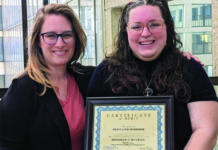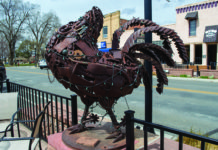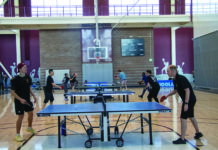Neither cello or piano was the true leader of the floor; instead, both instruments shared the stage equally. Unison highlighted the faculty recital of Professors of Music Dr. Arthur Houle and Dr. Kristen Yeon-Ji Yun, on Sept. 29.
The performance consisted of two sonatas for violin, instead played on cello, and Manuel Ponce’s “2 Canciones mexicanas No. 2 Estrellita.” Yun was on cello, and Houle was on piano.
“The music is beautiful, but actually, [the singer] is singing to this person that died,” Dr. Yun said of Ponce’s piece. In the piece, the singer tells Estrellita, the little star, the pain of her love, and dies from the heartache by the end.
Dr. Houle had some insight into what collaboration really means in music, and the possibility of overshadowing of a certain instrument over another. “When we talk about pianists working with other people, one of the people usually either falls into collaborative piano, where really the two instruments are equal partners, or sometimes weighted in favor of the piano.”
“Most of that collaborative piano music, […] if you look at the original editions as they were published, first editions, always you will find, piano and cello, piano and violin, piano and whatever […], almost never the other way around,” Dr. Houle said.
This performance avoided the favoring of one instrument, with both musicians sharing the spotlight together. The two sonatas played were Violin Sonata No. 1 Op. 78 G Major (arranged to D Major) by Johannes Brahms, and Violin Sonata in A major, M. 8 by César Franck.

“This one so-called cello sonata by Rachmaninoff [Sonata in G minor for Cello and Piano], very famous, […] Rachmaninoff himself would get angry if anyone just called it a cello sonata,” Dr Houle said. “He’d say nope, it’s a cello and piano sonata, or maybe more accurately piano and cello sonata. Don’t ever just call it a cello sonata, it’s ridiculous. But piano was so busy it sounds like a piano concerto, that doesn’t do justice to the so-called accompaniment.”
The sonatas were three and four movements, respectively, with the music of each one drenching the auditorium for over twenty minutes; the only breaks taken were between movements. Dr. Yun would pause briefly, and in sync with Dr. Houle, begin the next movement.
The next faculty recital take place Oct. 29 at 7:30 p.m. It will feature William Aikens on oboe, Dr. Susan Hess on bassoon, and Brian Krinke on piano.






